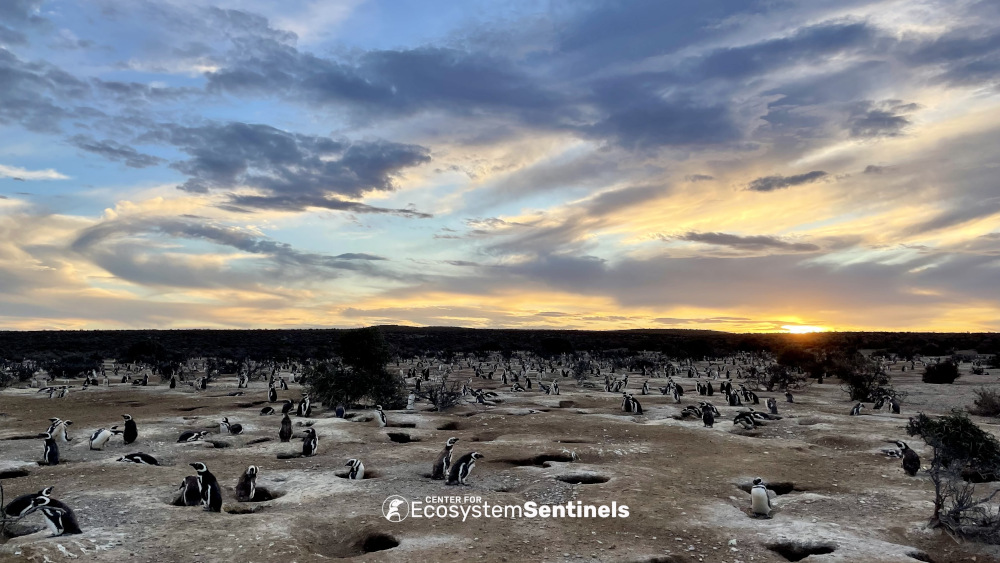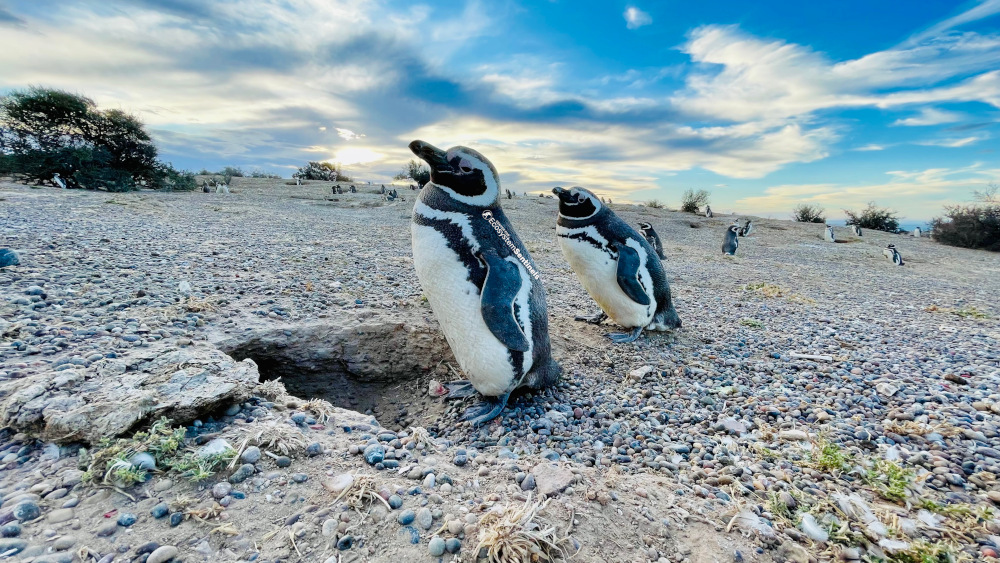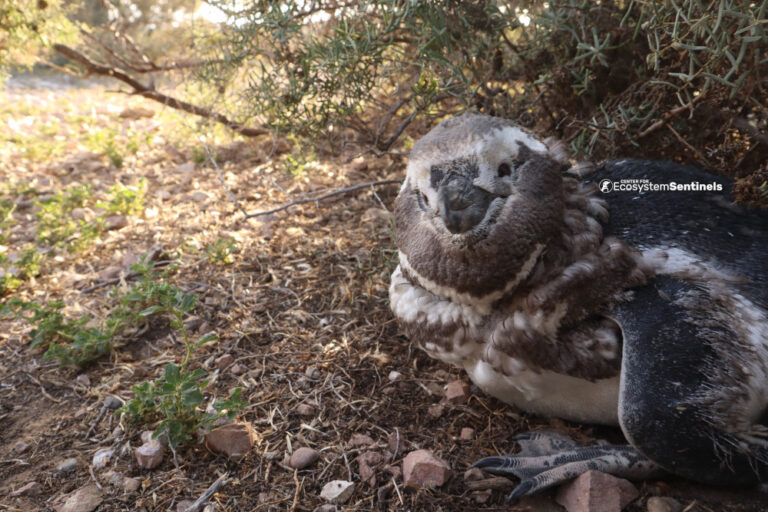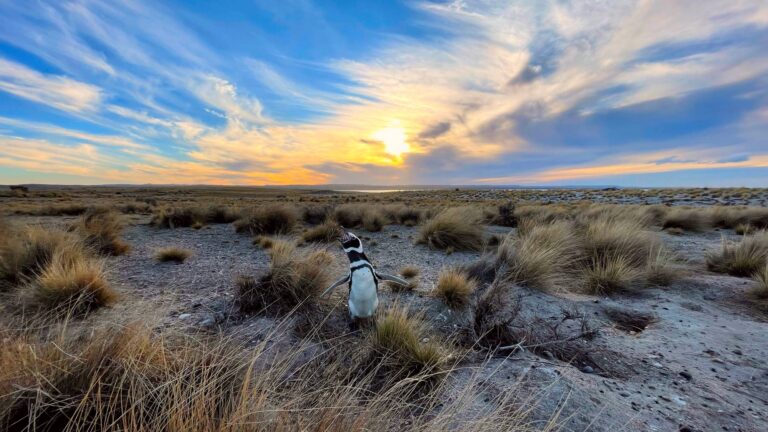Written by Dr. Eric Wagner
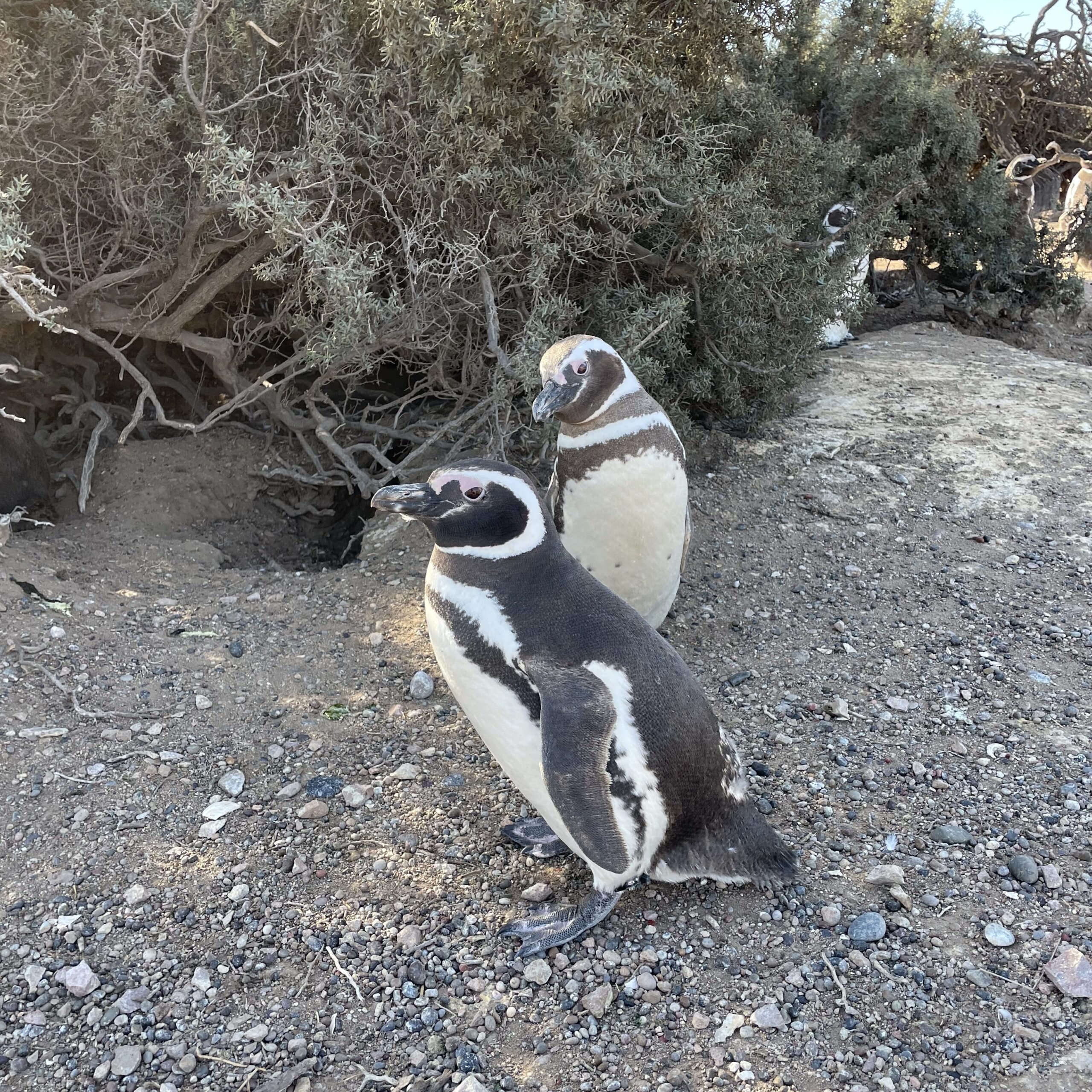
Photo credit: Eric Wagner
Thanks once again to generous support from Zoo Augsburg, research scientist Dr. Eric Wagner and computer specialist Pearl Wellington traveled to Punta Tombo in early March for a couple of weeks to mark the end of the breeding season. Eric and Pearl went to deploy twenty geolocating time-depth recorder (GLD) tags to female and male Magellanic penguins before they left the colony to start their migration.
We have been gathering data on penguin migration behaviors and habitat use since 2022. For the first three years we did this using satellite tags. These could tell us only the penguins’ locations. The GLD tags not only tell us where the penguins are, but also how deep they are diving. As such, we will be able to link a penguin’s location to its diving behaviors, showing in fine detail what marine habitat features are most important for penguins during their migration. This is vital information for conservation and management. Migrating penguins swim through very busy seas off the South American coast, with oil development and potential oil leases, fisheries, and so on.
One thing we like about the GLD tags is that they’re a lot smaller than the satellite tags, and so can be affixed to a penguin’s ankle. These tags are also archival, or loggers, meaning they hold on to their data rather than transmitting them automatically back to the lab, like the satellite tags do. This means we have to get these tags back. So we will look forward to our next trip to Punta Tombo in October, when we will collect the GLD tags and learn what they can show us about penguins, their migratory travels, and their ups and downs.
Find out more about our migration tracking project on our pengiun tracking page.
